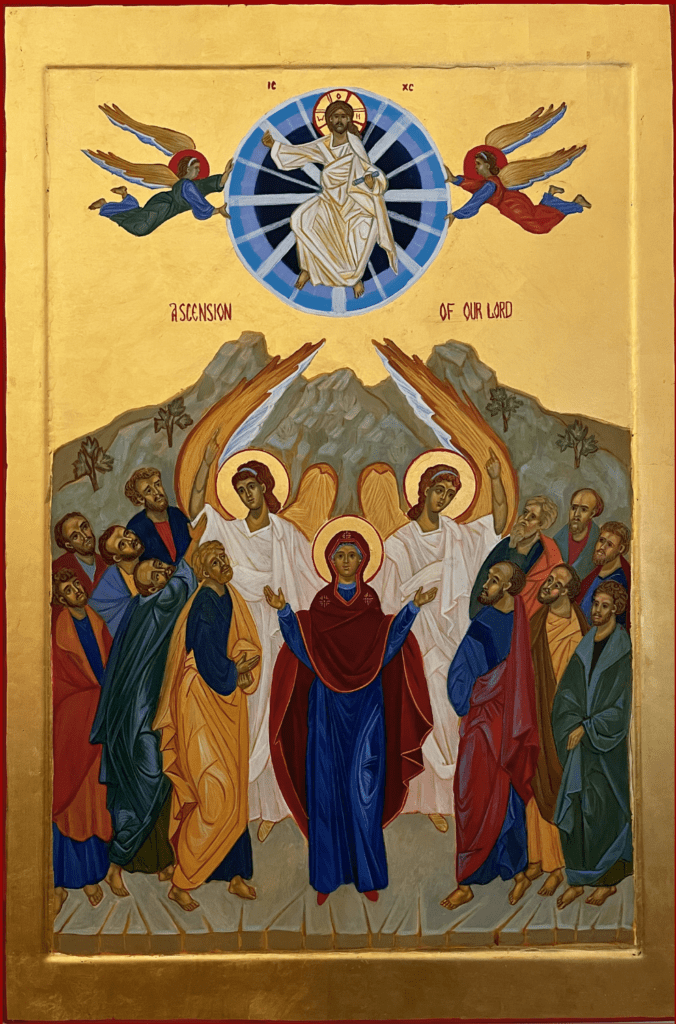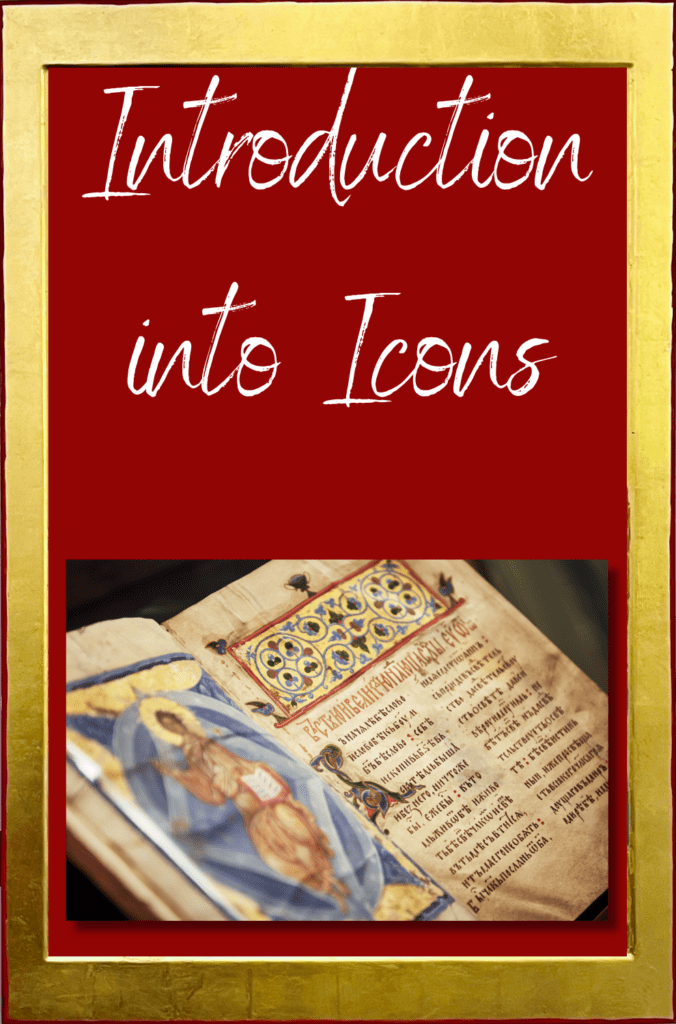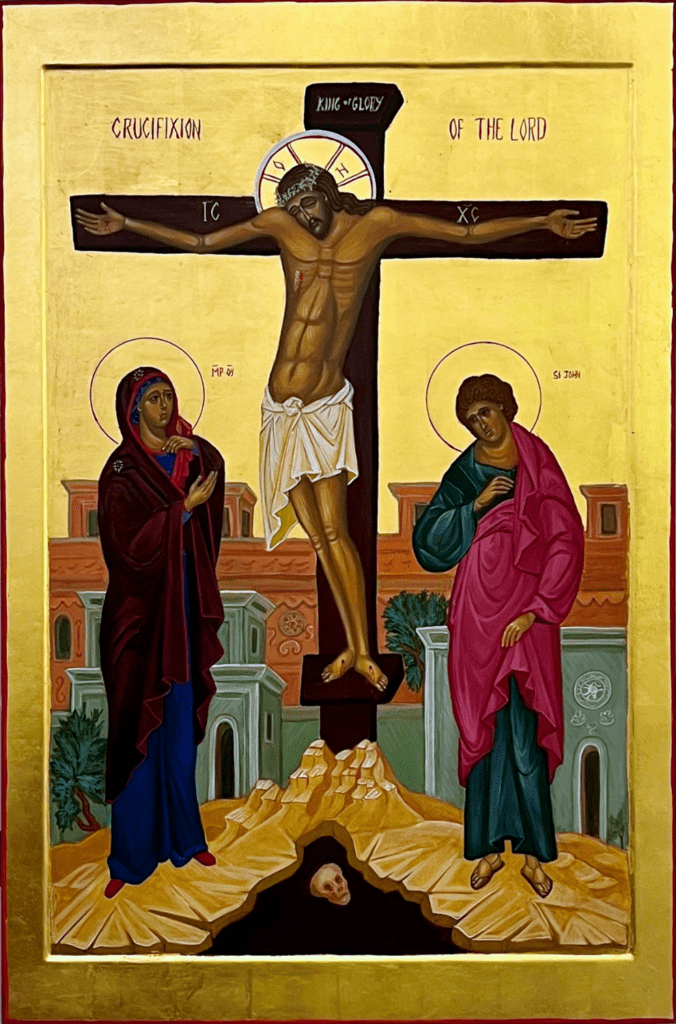Written By: John Menghini

Recently, we have installed three beautiful icons in our Adoration Chapel. The first icon, which was hung December 2022, is of the “Crucifixion of the Lord.” The second icon, “The Resurrection” was hung in April 2023. Our most recent icon, “Ascension of Our Lord” was hung in October 2023. All three icons were created by an iconographer from Coronado, California by the name of Maidie Weisbarth.
Please stop by the Adoration Chapel and see the most recent addition to our collection of Holy Icons. This long awaited icon, “written” by the iconographer Maidie Weisbarth, is of “The Lord’s Ascension into Heaven” and is naturally of great significance to our Ascension parish community.
Christ ascended into heaven on the fortieth day after His Resurrection. By His ascension in the Body, Christ raised our corrupted human nature and glorified it.
The Acts of the Apostles, written by the Apostle Luke, starts with an account of Christ’s Ascension:
“The former account I made, O Theophilus, of all that Jesus began both to do and teach, until the day in which He was taken up, after He through the Holy Spirit had given commandments to the apostles whom He had chosen: to whom He also presented Himself alive after His suffering by many infallible proofs, being seen by them during forty days and speaking of the things pertaining to the kingdom of God” (Acts 1: 1-3).
We know from the account in the Acts of the Apostles that Christ ascended from the Mount of Olives. In this icon, the mountain is represented by the rocks and the stylized olive trees which appear to sway and point towards Christ.
Christ is shown blessing the apostles with His right hand. We hear in the Gospel: ‘He blessed them, He was parted from them, and carried up into heaven’ (Luke: 24:51). In His left hand He holds a scroll which is a symbol of His teaching and of His divine word.
The concentric circles that surround Christ are called a “mandorla” in iconography. A mandorla portrays Christ’s glory, and in this icon also signifies the highest heavens to which Christ is ascending. Two angels are shown supporting the mandorla.
The Blessed Mother stands directly underneath Christ, in the centre of the foreground. She does not look up, but looks intently toward us. In contrast to the apostles who seem a bit unsettled, Mary appears still and peaceful. She, unlike the apostles, has a halo around her head signifying that while the apostles waited for the coming of the Holy Spirit, she had been chosen by God and was already overshadowed by the Holy Spirit (see Luke 1:35). In this icon she stretches out her arms in prayer signifying the prayers of the Church and inviting us to join her in her prayers of adoration for her ascending Son.
Two angels stand on either side of the Blessed Mother. They point to Christ illustrating the account of the Ascension in the Acts of the Apostles: ‘Ye men of Galilee why stand ye gazing up into heaven? This same Jesus, Who is taken up from you into heaven shall come again in like manner as ye have seen him go into heaven’ (Acts 1:11). The Ascension icon therefore foretells the Second Coming of Christ. The Mother of God and the Apostles are an image of the Church waiting for the Second Coming.
The apostles are arranged either side of our Blessed Mother — six on the right and six on the left. St. Paul is on her left, and St. Peter on her right.
Christ ascended before St. Paul converted to Christianity, but he is depicted for an important theological reason. The Virgin Mary and the apostles in the foreground represent the Church awaiting the coming of the Holy Spirit. At Pentecost the Holy Spirit descended not only on the apostles present, but also established the whole Church from among the nations of the world. St. Paul’s presence signifies the completeness of the Church. He is also included for another important reason. Just before the Ascension, Christ commanded His apostles to ‘go into all the world and preach the gospel to every creature’ (Mark 16:15). St. Paul, by His preaching of the Gospel brought countless people to the Faith which is why He is called God’s chosen vessel and the Chief of the Apostles, along with St. Peter.



